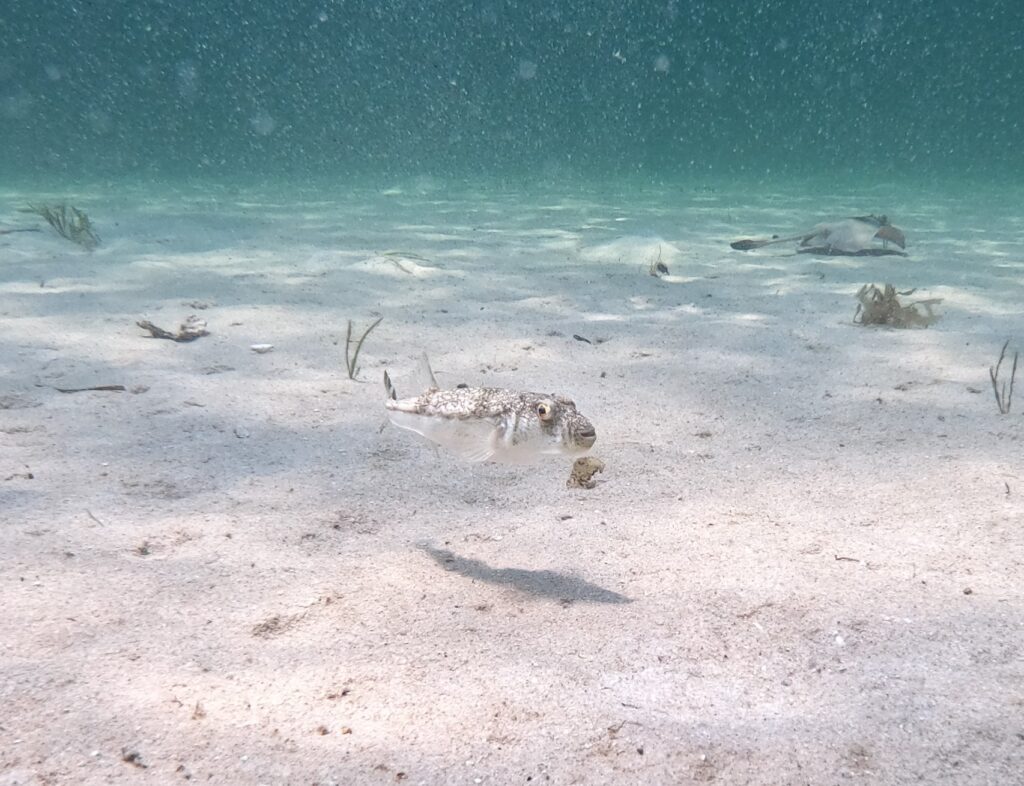Toadfish; Banded
Torquigener pleurogramma
Toadfishes are a large, easily recognised group of about 100 species, of which 25 species are found in Western Australia. They have characteristic torpedo-shaped bodies, rounded dorsal and anal fins set at the back of the body, soft skin lacking scales but sometimes with small embedded spines, and teeth fused into a beak. Another characteristic of this family is a lethal toxin, tetrodotoxin, which is present in the skin and internal organs of most species. Blowfish derive their name from their ability to inflate their abdomens with either air or water, an effective defensive mechanism to appear much larger to potential predators.
The banded toadfish are white below and grey to brownish above with numerous, variously sized small white spots. They have a distinctive horizontal line along the sides and several vertical lines on the lower section of the head. They grow to a maximum length of 20 centimetres, and live for approximately six years, reaching maturity at 2 years. Mature toadfish migrate to shallow coastal waters and spawn between October and January. Males and females release their sperm and eggs into the water where fertilisation takes place. Larvae then remain in sheltered estuaries until they are sexually mature. The banded toadfish are opportunistic feeders, feeding on a variety of benthic invertebrates such as crustaceans and marine worms as juveniles, then moving to a diet of bivalve molluscs, such as mussels as they mature. Some fish species, such as tuna, tailor and mulloway, are tolerant to the tetrodotoxin and prey upon this species.
The banded toadfish or “blowies” as they are commonly referred to, occur abundantly in schools in estuaries and coastal waters over a sandy habitat in Western Australia from Coral Bay, WA to Adelaide, SA and on the eastern sideboard from Narooma, NSW to Hervey Bay, QLD.
Despite being widely regarded as a nuisance, the banded toadfish play an important role in marine ecosystems by consuming waste scrap, bait and berley due to their scavenging nature. Removing individuals from a population may have adverse effects, where the population will breed to overcompensate for their loss.
Other common names include: Weeping toado, common blowfish, striped toadfish
Occurrence at the Busselton Jetty:
The banded toadfish is one of several species of toadfish that are common in the waters surrounding the Busselton Jetty. They are not observed in great proportions from the underwater observatory, with the odd banded toadfish swimming by close to the substrate throughout the day.
Image by: O.Rynvis
